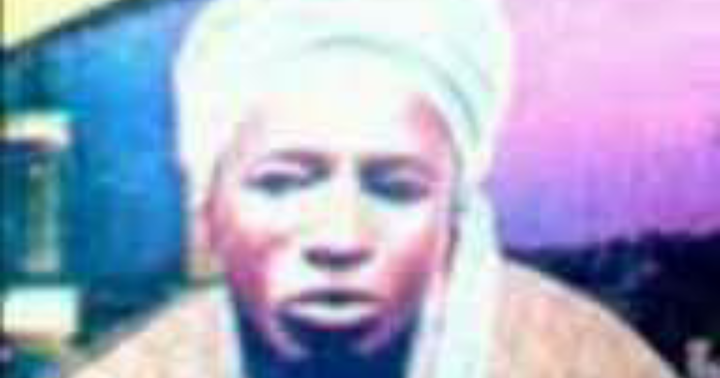By Hon Femi Kehinde
Murder is as old as mankind. Cain, because of a jealous rage, killed his brother Abel, according to the book of Genesis in the Bible. In exact similitude, Qabil and Habil, believed by Moslems, to have been the first two sons of Adam and Eve, just like Cain and Abel in the Bible, also suffered the same fate.
Adam asked both of them to present a sacrifice to Allah. Allah accepted Habil’s sacrifice and rejected Qabil’s, so he envied Habil and in a jealous rage too, killed him.
In criminal jurisprudence, it was almost a hard nut to crack, to sustain a murder conviction, without the discovery of the murdered person’s corpse- “Corpus delicti”.
In Apalara’s murder case, eleven accused persons were convicted and sentenced to death, for the murder of Alfa Bisiriyu Apalara, on the 3rd of January, 1953 at the Oko Baba area of Ebute-Metta, Lagos.
Alfa Bisiriyu Apalara, was born in Itoko, a town in the outskirts of Abeokuta. He had Quaranic studies and elementary education, before he went to Lagos to work as a carpenter.
In Lagos, Bisiriyu lived in Mushin – a settlement that was then known, as the home of street urchins and miscreants. In Mushin, Apalara lived a rough life and was involved in several negative aspects of a street life. In 1945, Apalara was imprisoned on the charges of theft. By 1950, like the conversation or the transformation of Saul to Paul, on the way to Damascus, in the Bible, Apalara had gone through a transformation.
He started praying regularly and fasting. He bade farewell to his past and also divorced his wife, so as to remove anything relating to the negative aspects of his past in Mushin.
In 1950, Apalara launched an Islamic crusade. The crusade was usually held in Ebute Metta or Mushin, usually at a street, or an intersection of two or three streets. Apalara became an articulate preacher and had a large followerships, majority of which were women. His preaching focused on condemning idolatry worships, lukewarm practice of Islamic Religion and vehemence against traditional cults, most especially, Agemo, Awo Opa, Egungun and Oro cults.
He became very noticeable and popular, and earned respect from the Muslim community, and was turbaned as the foremost preacher of a mosque in the Lagos Mainland. He was vicious in his preaching. In 1951, Apalara started having conflicts with the local cults and masquerades in Mushin.
During one of Apalara’s open air sermons, a cult and its masquerades, on its way to perform traditional rites, attempted to pass through one of its crusades, but they were blocked by Apalara’s congregation, at the insistence of Apalara. The standoff lasted a few minutes, and the cults and the Masquerades’ re-treated.
In 1952, a similar situation occurred which led to the exchange of blows and fisticcups, between a masquerade group and Apalara’s supporters.
Henceforth, he received constant threats to his life. Bisiriyu knew the secrets of the secret cults and according to him, “the emptiness of its faith”. Converts are usually hardened people.
On the evening of January 3rd, 1953, Alfa Bisiriyu Apalara, preached for the last time in his life, against the secret cults that he had hated, so passionately and later that night, he was murdered with an axe and died at the age of 35 years, at the peak of his life.
For that murder, 11 men were hanged on May 26, 1954. In the past, Apalara had frequently been warned. The Oro adherents believed that Apalara had exposed them and ridiculed their beliefs.
He had been frequently warned of the perils of denouncing and mocking their secret organization, so he had to pay the price for his determination, to speak his mind.
Shortly after his preaching on January 3rd 1953, some men, ambushed the Islamic preacher at Tapa Street in Ebute-Metta and attacked him with cutlasses. They left him to die and thereafter, dumped his body into the Lagoon.
During the trial, a prosecution witness said the murderers, put his body in a canoe and took his body to an unknown destination across the Lagoon. It was also generally believed that his body was put in a canoe, that evening and was thrown overboard with a stone tied to his neck, some few kilometers away from Tapa Street, Ebute-Metta, Lagos.
Detective Sergeant John Aboderin, who was investigating the case, came up with some interesting facts.
One night, while he was sleeping, he heard a tapping on the window. Then came a secret society password: whoever it was, the man outside was one of the brotherhood. The unknown midnight police informant, still remained a mystery. It was West Africa’s most sensational murder trial of it’s time.
“I know something you want- something you’re looking for” came from the other side of the window. The Detective Sergeant threw aside the blankets, swung his legs off the bed. “Don’t come to the window or put on the light. If you do, I shall disappear.”
From his bedside, the detective took his note book and pencil. “All right, talk on” he whispered back- “I know that who killed Apalara” said the voice and made the detective swear by heaven and earth, he would in no way disclose how he had received his information.
The man mentioned fifteen names and disclosed the name and address of one important person, who was not connected to the murder, but knew everyone in it.
He then related how Apalara had been killed with a machete at Number 8, Tapa Ebutte Metta, carried to the Lagoon, foreshore and dumped in a canoe.
The Detective Sergeant said: “one secret password spoken by the night visitor, not only revealed to me that this man was a member of the secret Awo-Opa Cult- to which I also belong- but convinced me that he knew what he was talking about.”
“To this day, I do not know who he was or why he risked his life to tell me these things- He has never returned for thanks or reward,” according to the Detective Sergeant.
From there, Detective Sergeant Aboderin went to Number 8, Tapa street and made a thorough examination of the area. His conviction of the night callers, honestly was confirmed when he discovered blood stains.
“I followed the trail of blood which led me to the foreshore. There I found quite a pool of blood and what last bit of doubt I had, that I was on the right trail disappeared; but it was the fact that the gruesome incident had arisen from an open conflict with a secret society- the ancient Oro cult- which raised a storm, which was to make this the most sensational crime in the annals of Nigerian criminology – and which posed a problem for Detective Sergeant Aboderin for he was an unabashed member of the cult.
“As a police officer, would I betray the police to the cult? I have no such dilemma. There never has been any conflicts between the true ideals of the cults and the mission of the police and that is why I was able to maintain my membership of both.”
As the court later found, Apalara’s murder, resulted from a conflict with the Oro cult. But it was only a wing of it. The Muslim preacher was treading dangerously on the toes of a section of the members of the ancient cult. He threatened their exposure, for they were prostituting the powers of the cult, frightening people from the streets, whenever they wanted to carry out their smuggling or burglary expeditions. And the late Alfa Apalara knew it. He was a dangerous firebrand and had to be expiated at all costs. The Awo Opa cults of the Yorubas, is a very ancient society, known amongst devotees, as Ijinla Olokun and to the outside world as Awo Opa.
“what is not generally known to the public is that even within the Oro society itself, there are cabinets and inner cabinets of oaths. The innermost cabinets operates in complete secrecy from the inner one and so on” Aboderin said.
“It is often quite easy for new rotten branches to stem from the main trunk. And it can be appreciated that even within that section there are many members who are not party to, if cognizant of, the corrupt and often criminal practices of the inner circle. I was able to convince the cults that I was out to help them break the crime ring and to clear the good name of the cults.
“This is how the notorious wing of the Okobaba men operated that night. Apalara had no chance of escape as all routes – four of them – had been securely barred by the gangsters. They wore loin clothes and were otherwise stark naked, to make escape easy and leave no blood stains.
“At the given Oro signal, they threw off their covering clothes and approached the scene of the murder stark naked. Even juveniles were employed in collecting the cover clothes, and in minor roles near the scene of the crime. Thus the gangsters were able to make a clean getaway, leaving as they believed, no clues behind them. The canoe-men who had been hired for the operation then refuses to carry the dead body- it would leave stains on the bottom of their canoe. In the delay, the blood from the hideous cuts left me one of my most valuable clues on the foreshore.
“Another factor that aroused so much interest during the trial, was speculation as to why the body of Apalara was never found. The jury themselves attached great significance to a well-known maxim specifically attached to the Oro cult from time immemorial. That is- “a ki ri ajeku Oro”, literally meaning, “no one is ever expected to see the leftover of the Oro,” the detective sergeant went on.
“This tradition arose a long time ago, when a certain rich man, not a member, desired to be taken to the meeting place of the Oro men- usually deep in the forest and secluded from prying eyes. He sought to know their secret.
“He was escorted there, but has never been seen since. And it has been the tradition of the Oro people never to leave any traces of food or anything behind at their meeting spot.
“In keeping with this tradition, the body of the late Apalara was cut up into little pieces and thrown piece by piece into the lagoon from a moving canoe.
“But remember, it was to true, honest members of the various cults that I owed almost all the clues, which ultimately brought eleven men to a just death.”
The incidence that occurred on the evening of January 3rd, 1953 on Tapa Street, Ebute-Metta Lagos, led to the arrest of several persons linked to the crime and they were charged with Apalara’s murder.
The first accused person, was Joseph Ogundipe. There were also other accused persons, including two Oteka brothers, who were tried by Justice De Comarmond and a Jury at the Lagos High Court, who found them guilty of killing the deceased. It was a case rooted in circumstantial evidence. The trial judge in his summing up, with the evidence of the victim’s death said:
“His belongings were found in his house and he has never been seen again and we have got the evidence of the blood (which was human) which was found leading from that place, Tapa Street to the foreshore. The hearing of the case took approximately five weeks at the end of which the jury delivered their unanimous verdict of guilty against each of the accused persons. They were thus condemned to death, for the murder of a person whose body was not found.
The convict, dissatisfied with the judgment of the court, lodged a Notice of Appeal at the West African Court of Appeal (WACA). The Appellants urged WACA to quash their convictions. At the hearing of the Appeal, Mr. Ali Balogun appeared for the first Appellant, Mr. A. Tejuoso, whom the popular Tejuoso market, Yaba was named after, appeared for the 3rd, 7th, 8th and 11th Appellants.
Mr. G.B.A Coker for the second, fourth and ninth Appellants and Mr. Tejuoso led Mr. Coker for fifth and sixth Appellants; the tenth Appellant argued his own case and the Crown was represented by Mr. Madarikan- who later became a Justice of the Supreme Court of Nigeria.
The case of the appellants who relied heavily on the ground of appeal was that the verdict of the lower court was unreasonable and against the weight of evidence. The appellants also complained that the Judge did not direct the jury properly, on the possibility of returning a verdict of manslaughter.
Delivering judgment, the WACA said “we have examined the evidence against each appellant, with anxious care and are satisfied that there are evidence against each one of them, upon which the jury could properly, come to the conclusion they did.”
The court said the evidence in each case was carefully and fairly dealt with, by the trial Judge in his summing up to the jury, who had the advantage of seeing and hearing the witnesses, and there is in our view, nothing which would justify our interfering with the verdict of the jury, in any one of the cases, on the ground of appeal in question.
The WACA held that it was unable to agree with the appellants, that the trial Judge failed to direct the jury properly as to the nature of evidence required in the absence of corpus delicti.
According to the court – “It appears to us that there was ample evidence, if accepted by the jury as it clearly was, that Apalara died on the night of the 3rd of January, 1953, as a result of injuries inflicted upon him, and we are of the opinion, that this aspect of the matter was clearly and adequately put to the jury, by the trial Judge, when he summed up the case to them.
The WACA noted that the appellants’ lawyers, also argued that the trial Judge erred in leaving the question whether the seventh witness called by the prosecution, Yesufu Aka, was an accomplice, to the jury, and in the absence of corroboration of his evidence, the jury ought not to have convicted some of the appellants.
But the court declared that there was no substance in this complaint, even as it held that the prosecution had proved in the court below that the 10th Appellant, accused No. 19, was at the scene of the crime on January 3, 1953.
It said “the accused denied that the statement he was alleged to have given to the police, exhibit C1 was a voluntary one. He denied attending the meeting held at the Bale’s house on the 2nd of January, 1953 or being at the scene of the crime on the night of the 3rd of January, 1953 and there was ample evidence, obviously accepted by the jury, showing his complicity in the crime.
”for these reasons we are .of the opinions, that there is no substance in any of the appeals and they, therefore, dismissed.”
In effect, the WACA affirmed the conviction of the appellants and the death sentence passed on them. The men were actually executed on May 27, 1954.
Alfa Bisiriyu Apalara, a notable Nigerian Muslim Cleric of his time, in the early 1950s and who held a series of crusades and Dawha in Ebute-Metta and Mushin area of Lagos, with a common theme of speaking out against traditional Yoruba cults, such as Oro, Awo Opa and Egungun and drawing more adherents of Traditional African Religion to Islam, may your soul and undiscovered corpse, continually find peaceful repose with the Almighty Allah.
HON. (BARR.) FEMI KEHINDE IS A
FORMER MEMBER, HOUSE OF REPRESENTATIVES,
NATIONAL ASSEMBLY, ABUJA,
REPRESENTING AYEDIRE/IWO/OLAOLUWA FEDERAL CONSTITUENCY OF OSUN STATE (1999-2003)
&
PRINCIPAL PARTNER, FEMI KEHINDE & CO (SOLICITORS)
IBADAN OFFICE- NO 84, IWO ROAD, IBADAN.
LAGOS OFFICE – PLOT A, OLUWALOGBON MOTORS BUILDING, OBAFEMI AWOLOWO WAY, IKEJA,
LAGOS.
ABUJA OFFICE – NO 8, SUEZ CRESCENT, IBRAHIM ABACHA ESTATE,WUSE ZONE 4, ABUJA, FCT.

 Africa6 days ago
Africa6 days ago
 Featured6 days ago
Featured6 days ago
 Featured5 days ago
Featured5 days ago
 Featured5 days ago
Featured5 days ago
 Opinion5 days ago
Opinion5 days ago
 Headline4 days ago
Headline4 days ago
 News6 days ago
News6 days ago
 Voice of Emancipation4 days ago
Voice of Emancipation4 days ago













